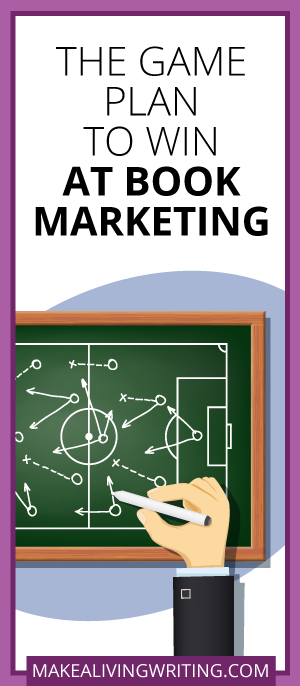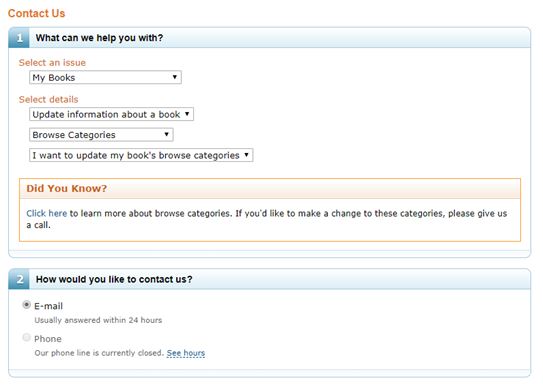
You know…a game plan to help you attract more readers, build authority, and generate book sales.
Ever thought about writing a book?
It’s never been easier to be an author. Write a book, self-publish, put it on Amazon, and you’re set.
Sounds simple, right?
Here’s the problem. With books being published every day, it’s difficult for a new author to stand out.
The basics aren’t enough to get your book out there. And that means it’s up to you to create book marketing opportunities to boost exposure.
It’s the kind of problem I’ve helped thousands of writers and authors tackle over the last five-plus years.
Want to get your book in front of more readers?
Check out these winning moves from my book-marketing playbook.
1. Collaborate with other authors
One advanced marketing tip is to work with other authors in your genre. No matter your niche, there are plenty of other authors who are targeting a similar audience. So, try to connect with them and work together.
Here are two ways you can help each other:
Cross-promote each other’s work
Reach out to authors in your genre who have a similar following to yourself and ask if you can promote each other’s work.
This is a great strategy if you shout-out other books in your email newsletter. There are plenty of ways to connect with other authors.
- Bookfunnel, for example, is a paid service that connects authors through promotions.
- StoryOrigin is a currently free tool that helps authors connect for swaps, promos and reader magnet giveaways.
Release a book bundle
Once you’ve connected with a range of different authors for cross-promotion, you can even go a step further and release a book bundle.
Basically, you and the authors you connect with each contribute one book to create a bundle. Then, each author markets the bundle to their list. You can even use Facebook ads to boost the bundle even more.
If you’re a non-fiction author, you may also want to check out sites like Infostack, where you can apply to contribute to bundles worth thousands of dollars.
Here’s an example:
- Dave Hickman from Writer’s Edit contributed to an Infostack bundle that sold over $6,500 worth of products for only $49! Then, when a customer claimed one item from the bundle, they had to give their email address to sign up or download.
These bundles are a great way to promote some of your older titles or give a boost to your email list.
2. Go international
The US is Amazon’s biggest market, but that doesn’t mean it’s the only market you should participate in. Amazon is growing all around the world. There are over a dozen versions in a range of countries.
Many of these international Amazon stores have under-served genres where readers are craving new books.
So, if you’re looking for a way to get your book to more people, consider translating your book and selling it in another market.
With the lack of competition comes an opportunity to become an early authority and an international man or woman of mystery.
Here’s an example:
- Mark Dawson from Self Publishing Formula has translated his crime books to German to sell on their version of Amazon. While Germany is a tiny population in comparison to India or China, the German eBook reading numbers are large and growing.
3. Create an audiobook
Audiobooks are big business these days, with 20% of Americans listening to audio versions of their favorite books.
In a recent podcast appearance, best-selling author Malcolm Gladwell said that the Audible version of his book Talking to Strangers sold just as many copies as the hard copy. That’s huge!
If you want to create an audiobook version of one of your releases, there are a bunch of great services out there.
- ACX is the biggest player in the game and is Audible’s go-to provider.
- However, there are other options like Findaway Voices
- Or you can hire dedicated freelancers who will narrate your audiobook.
As with any service, costs will vary. However, if you’re looking to get a high-quality audiobook created, you should be looking at around $225 per 10,000 words. But keep in mind, if your audience is used to hearing your voice from video or audio content, then you may want to record your own audiobook. You should also keep in mind the need to make your cover friendly for audio cover design rules.
Your audiobook version can also be used as a time-sensitive bonus to drive sales. Many nonfiction authors will create a free eCourse using tools like Thinkific or Teachable to increase pre-orders of their book.
Here’s an example:
- When Pat Flynn released his book, Superfans, in 2019, he gave away a free audio version to anyone who pre-ordered the book. With the free audiobook offer, Pat created a sense of urgency to incentivize people to purchase the book before its release, helping the book launch as a bestseller. This strategy also works well for fiction – better than the free course approach.
4. Start using paid book review platforms
Book reviews are helpful for book promotion. They can be difficult to get, however. So, after you reach out to your list for early reviews, you can step it up a level.
Here’s an example:
- NetGalley is a platform that connects readers with books they can read and leave a review on. Readers sign up for free and are offered books from a range of relevant publishers or self-publishers. The readers then read the books they like the sound of and leave an honest and voluntary review afterward. NetGalley sure beats running around looking for reviews, or worse, just posting your book and crossing your fingers.
However, it is important to know that NetGalley, or any similar platform, isn’t a magic wand. You must wait for many readers to finish your book, and there is no certainty that the readers will like your book, anyway.
Disclaimer: This isn’t about ‘buying reviews.’ That’s something you should NEVER DO as it’s unethical and against Amazon’s terms of service. However, using sites like NetGalley helps connect you with reviewers who can choose to review your book. The key is the voluntary choice to do so.
5. List your book in 10 categories on Amazon (instead of 3)
You put your book up for sale on Amazon. Now what?
Your book can only be listed in three categories of all of those available on Amazon. The categories you list your book under will either help or hinder your book’s path to becoming a best-seller.
If you choose a hyper-competitive category, odds are you’ll never get much visibility as a self-publisher. If you select the right category, you might get to the top if you play your cards right.
What if there’s a way to triple your chances of becoming a best-seller and list your book in up to 10 categories?
Sadly, Amazon doesn’t show you all of its 16,000 categories for eBooks and books when you publish. Instead, you’ll have to go all-in on an internet deep-dive.
Here’s how:
- Start by typing in words to describe your book, clicking through to different categories in the Amazon store, and noting down the ones you see.
- This research strategy isn’t time-efficient, but getting your book in the smartest categories can be the difference in whether your book is a best-seller. Alternatively, using a tool like Rocket can allow you to do your research in mere minutes.
When you’ve chosen the category you’d like to be listed in, here are the steps you can take to change your book’s category listing.
- Visit the help/contact page in Author Central and sign in to your KDP account.
- Go to ‘Select an issue’ and choose ‘My Books.’
- Click the option to ‘Update information about a book.’
- Select ‘Browse Categories’ in the field that appears.
- Click the ‘I want to update my book’s browse categories’ option.
- From there, you can either call (if you’re an American resident) or email in and ask to change your book’s category. In this email, you can add up to ten categories.
Remember, you must include the full category string in your email. A category string looks something like this:
Kindle Store > Kindle eBooks > Teen & Young Adult > Science Fiction & Fantasy > Fantasy > Fairy Tales & Folklore > Anthologies
Also, make sure you mention your book’s ASIN number.
By doing the extra bit of work and manually changing your book’s categories, you’ll gain visibility and put your book in front of more potential readers.
6. Optimize your keywords
As an author, you’re likely well-acquainted with the phrase “keyword research.”
- If you’re not, a keyword is a word or phrase that someone types into a search bar to get a specific results. On Amazon, these are called Kindle keywords.
As an author, you want to know what these phrases are so you can optimize your listing to show up in those searches.
Luckily, Amazon has a feature where it tries to predict the end of your search query. You can take these steps to use this feature and do your keyword research.
- Make sure you are using incognito mode on your browser to avoid past searches from influencing your results.
- Select “Kindle Store” or “Books” as the Amazon category.
- Start typing in a word and note what Amazon suggests in the search box.
- Once you’ve found a phrase that you like, add each letter of the alphabet at the end of your word/phrase, and see what comes up.
An example of Step 4 is: “Western a,” “Western b,” “Western c,” and so on.
Once you’ve selected a keyword, use that phrase in your sales copy or even your book title.
This isn’t a quick process, which is why so many authors don’t do it, but showing up for relevant searches is an absolute game-changer for authors looking for more exposure after self-publishing on Amazon.
That said, doing keyword research this manual way won’t give you any information on how many times a phrase has been searched for and which ones to prioritize. You’ll need to use Rocket to get an estimate of those numbers.
It is also good to know that Amazon has a guide to keywords that includes words to avoid using.
Book marketing for freelance writers
According to my book marketing playbook, the basics of selling are still important. But once you’ve taken care of those, use some of these more advanced strategies to sell more books. Many of these techniques can be implemented for little or no cost, which is great for new authors on a tight budget.
What book marketing strategies do you recommend? Leave a comment below.
Dave Chesson is the creator of the e-book keyword research tool KDP Rocket (yes, Carol uses, recommends, and proudly affiliate sells it). He also shares in-depth book marketing guides on Kindlepreneur.com













